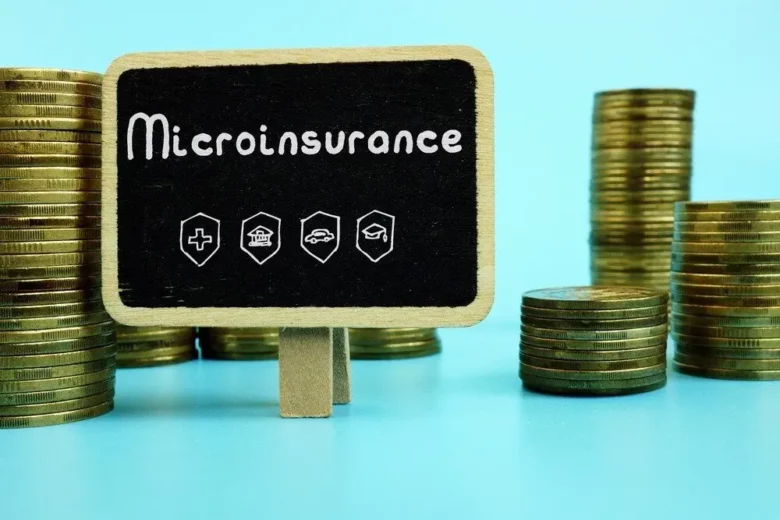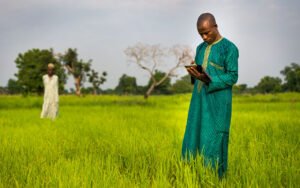Microinsurance is a type of insurance designed to help people with low incomes or who live in economically vulnerable areas obtain insurance at a low cost. Microinsurance is a way to protect your finances in the event of illness, accident, or natural disaster. It is intended for people who may not be able to afford term life insurance. Microinsurance plans often have lower premiums than regular insurance, and their structures are simplified, making them more accessible and understandable to those who do not know much about money or insurance.
1. Where is Microinsurance and Why is It Used?
Microinsurance came about because people with low incomes bear significant financial risks because they cannot obtain regular insurance. After all, it is too expensive and difficult to understand. Initially, it was associated with microfinance and was intended to help people who were engaged in small-scale businesses such as farming or who were engaged in informal transactions. The aim is to provide them with security and ensure that they do not become very poor due to something unexpected. Now, many groups, including governments, nonprofits, and private companies, are promoting microinsurance to strengthen communities, help people earn a living, and make people more financially stable who might otherwise go uncompensated for their losses.
2. The Role of Insurance is So Limited:
Microinsurance is similar to regular insurance but is designed to meet the needs and circumstances of low-income people. It keeps costs low and simplifies coverage options. For example, with agricultural microinsurance, premiums can be calculated based on crop type, land area, and weather trends in the area. In addition, the process of paying claims is often expedited and, in some cases, even automated to ensure that people receive help quickly. While policyholders may find it difficult to fill out traditional paperwork, technology can make daily tasks easier. For example, payments and claims can be made on mobile devices.
In the case of microinsurance, the process can include working with communities or local groups to help distribute and administer policies. When insurance companies work closely with communities, they can reach people who might not otherwise be able to get coverage. People feel that a group they already know is taking care of their needs, which increases trust.
3. What Are the Benefits of Microinsurance?
One of the biggest benefits of microinsurance is that it is available to people on low incomes. Traditional insurance may be too expensive and difficult for some to understand, but microinsurance can provide coverage at a lower cost and with simpler rules. Another important benefit is that it provides people with a safety net that allows them to recover from losses without sinking further into poverty. For example, if a farmer loses a crop due to drought, agricultural microinsurance can help pay for the crop so that the farmer can recover without experiencing significant financial hardship.
Microinsurance also helps economic growth by encouraging people to manage risk and plan their finances. When people feel secure, they are more likely to participate in small-scale businesses, spend money, and help the community without fear of losing everything at once. People and families feel safe enough to go to school, improve their living standards, and invest money in the local economy. This makes the city stronger.
4. Challenges in Implementing Microinsurance:
There are many challenges with microinsurance, although it can be useful. The biggest challenge is that it is difficult to keep costs low while controlling risks. People in the target group often live in economically unstable areas, which means that the likelihood of claims is high, which can put a strain on resources. Microinsurance also requires accurate data to determine how big a risk is. However, obtaining this data can be difficult and expensive in rural or remote areas.
There is also the problem that the people you are trying to reach do not know much about insurance. Many people in low-income areas do not know much about financial products, which makes it difficult to explain why insurance is important. It is important to build trust with these people, because they may not be willing to pay a premium until they fully understand the rewards. Educational initiatives and partnerships with local groups are often used to address this problem, but they cost more money and require more work.
5. How Does Technology Play a Role in Microinsurance?
Technology plays a key role in making microinsurance possible and accessible. For example, mobile technology has changed the way microinsurance programs are sold and administered. Mobile phones are commonplace in many parts of the world, even in low-income areas. This allows service providers to connect directly with people. Policyholders can pay premiums, file claims, and receive payouts through mobile apps that are designed to be easy for people who are less savvy about money.
Artificial intelligence and data analytics are also being used to develop policies that are tailored to the risks each community faces. For example, satellite technology can detect weather trends and help set up agricultural microinsurance policies that pay out when certain weather conditions occur. The claims verification process can be costly and time-consuming, especially in remote areas. Using this technology reduces the need for these processes.
6. Microinsurance and Access to Credit:
Microinsurance is an important part of financial inclusion and aims to ensure that everyone, regardless of how much money they have, can access and purchase financial services. Microinsurance provides low-income earners with a way to protect their money, giving them more power to contribute to the economy. This in turn helps reduce poverty and injustice. For example, if people have microinsurance for health care, they are more likely to see a doctor when they need it. This can improve their health and reduce the long-term costs of unrecovered conditions.
People are given the tools they need to make good financial choices, manage their money well, and break the cycle of poverty through financial inclusion. Microinsurance is therefore an important part of maintaining economic stability and strength, especially in areas that are more vulnerable to disasters.
Conclusion:
Microinsurance is a great way to help low-income earners stay financially stable and secure, as they can easily access insurance options that cover a variety of everyday risks. The industry still struggles with trust, cost, and awareness, but this is growing thanks to technology and a greater focus on financial inclusion. Microinsurance not only provides a safety net but also gives people the confidence to do business, knowing they are covered if they unexpectedly lose something. If microinsurance continues to come up with new ideas and keeps going, it can provide real financial security to millions of people around the world.
FAQs:
1. What types of risks does microinsurance cover?
Microinsurance can protect against many perils, such as illness, death, property damage, accidents, crop failure, and even natural disasters. There are also different types of microinsurance, which cover different types of risks. For example, agricultural microinsurance covers crop loss or livestock loss.
2. How do I calculate the rate for microinsurance?
The size of the risk, the type of policy, and the income level of the group served all affect the premium for microinsurance. To keep premiums low, policies are often offered that cover only certain risks rather than policies that cover all risks.
3. How is microinsurance different from general insurance?
In general, microinsurance has simpler terms, lower premiums, and fewer coverage options than general insurance. They are easier and cheaper to set up for people who are not very financially savvy or have limited money.
4. How do you purchase a microinsurance package?
Microinsurance policies are often available through community groups, microfinance institutions, or local organizations. Microinsurers sometimes let people buy policies directly from them, often through a mobile app.
5. How do you apply for microinsurance?
Microinsurance often streamlines the claims process, making it faster and easier for people to use. Many providers are using technology like mobile apps or digital wallets to quickly process claims and send payments without the need for a lot of paperwork.




